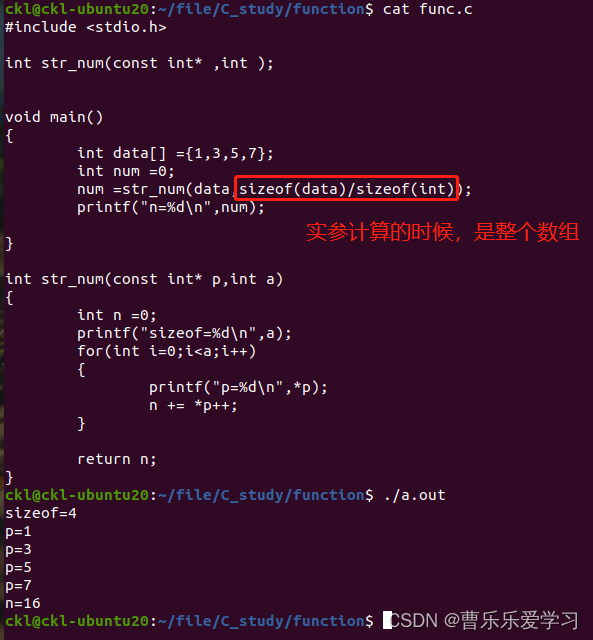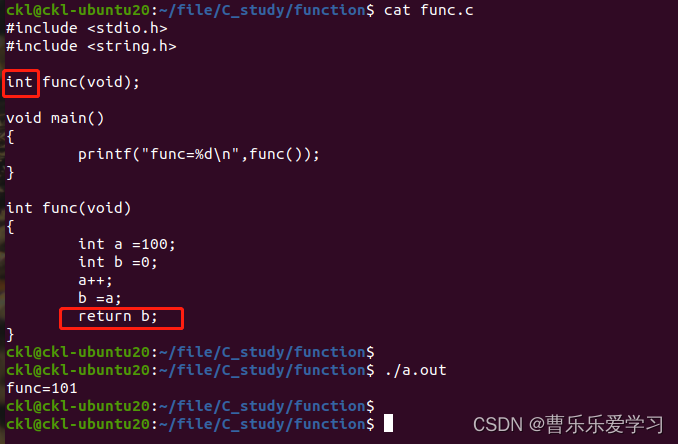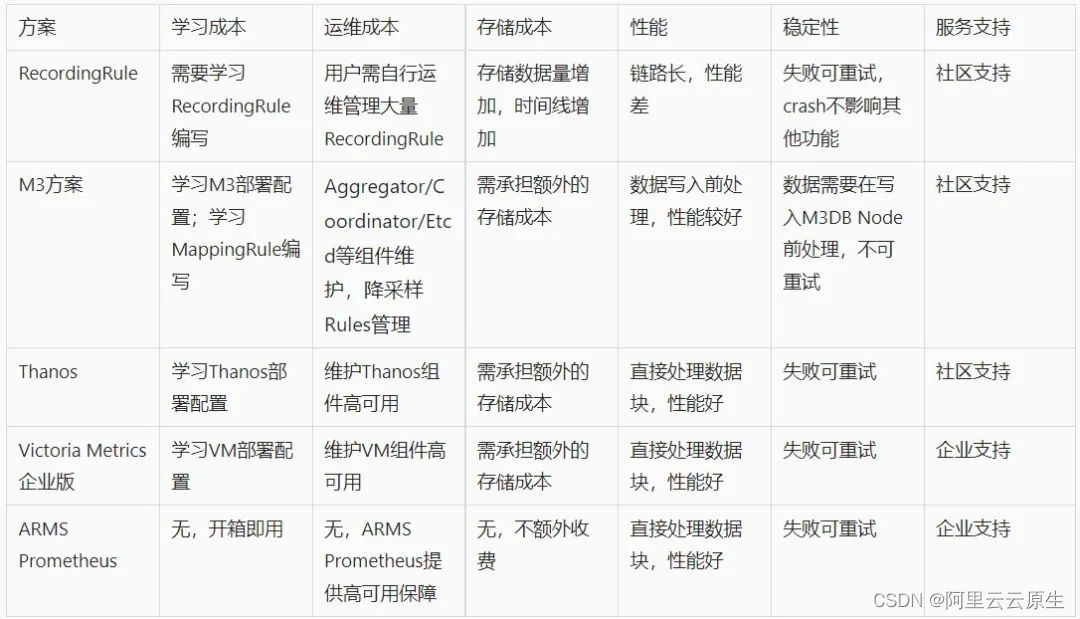当前位置:网站首页>Use assimp library to read MTL file data
Use assimp library to read MTL file data
2022-07-05 04:47:00 【Haro3378】
Recently in use opengl Do school homework , When reading the model, I encountered the problem that the material cannot be displayed , Through research obj And mtl The reason is found in the file format .
Because I used to use the reading class made by others , Models with maps can be processed normally , But this time the model has no mapping , Materials are directly assigned by attributes , Such as

among ,Ka Represents ambient light ,Kd Represents diffuse light ,Ks Represents specular highlights .
In order to read these data , It has been modified in the existing code ( The code is at the bottom ).assimp In fact, it provides a method to read these data , We just keep it in mesh In information , And pass in shaders to use .
aiMaterial* material = scene->mMaterials[mesh->mMaterialIndex];
Material mat;
aiColor3D color;
// Read mtl File vertex data
material->Get(AI_MATKEY_COLOR_AMBIENT, color);
mat.Ka = glm::vec4(color.r, color.g, color.b,1.0);among AI_MATKEY_COLOR_AMBIENT That is, the information corresponding to the ambient light .
When data is passed into the shader , Used ubo object , because vbo The vertex, normal and other information of the model have been saved in , So deal with materials separately .
The code is as follows :
mesh.h
#pragma once
#ifndef MESH_H
#define MESH_H
#include <glad/glad.h> // holds all OpenGL type declarations
#include <glm/glm.hpp>
#include <glm/gtc/matrix_transform.hpp>
#include "shader_m.h"
#include <string>
#include <fstream>
#include <sstream>
#include <iostream>
#include <vector>
using namespace std;
struct Vertex {
// position
glm::vec3 Position;
// normal
glm::vec3 Normal;
// texCoords
glm::vec2 TexCoords;
// tangent
glm::vec3 Tangent;
// bitangent
glm::vec3 Bitangent;
};
struct Material {
// Material color illumination
glm::vec4 Ka;
// Diffuse reflection
glm::vec4 Kd;
// Specular reflex
glm::vec4 Ks;
};
struct Texture {
unsigned int id;
string type;
string path;
};
class Mesh {
public:
/* Mesh Data */
vector<Vertex> vertices;
vector<unsigned int> indices;
vector<Texture> textures;
Material mats;
unsigned int VAO;
unsigned int uniformBlockIndex;
/* Functions */
// constructor
Mesh(vector<Vertex> vertices, vector<unsigned int> indices, vector<Texture> textures, Material mat)
{
this->vertices = vertices;
this->indices = indices;
this->textures = textures;
this->mats = mat;
// now that we have all the required data, set the vertex buffers and its attribute pointers.
setupMesh();
}
// render the mesh
void Draw(Shader shader)
{
// bind appropriate textures
unsigned int diffuseNr = 1;
unsigned int specularNr = 1;
unsigned int normalNr = 1;
unsigned int heightNr = 1;
for (unsigned int i = 0; i < textures.size(); i++)
{
glActiveTexture(GL_TEXTURE0 + i); // active proper texture unit before binding
// retrieve texture number (the N in diffuse_textureN)
string number;
string name = textures[i].type;
if (name == "texture_diffuse")
number = std::to_string(diffuseNr++);
else if (name == "texture_specular")
number = std::to_string(specularNr++); // transfer unsigned int to stream
else if (name == "texture_normal")
number = std::to_string(normalNr++); // transfer unsigned int to stream
else if (name == "texture_height")
number = std::to_string(heightNr++); // transfer unsigned int to stream
// now set the sampler to the correct texture unit
glUniform1i(glGetUniformLocation(shader.ID, (name + number).c_str()), i);
// and finally bind the texture
glBindTexture(GL_TEXTURE_2D, textures[i].id);
}
// draw mesh
glBindVertexArray(VAO);
glBindBufferRange(GL_UNIFORM_BUFFER,0, uniformBlockIndex,0,sizeof(Material));
glDrawElements(GL_TRIANGLES, indices.size(), GL_UNSIGNED_INT, 0);
glBindVertexArray(0);
// always good practice to set everything back to defaults once configured.
glActiveTexture(GL_TEXTURE0);
}
private:
/* Render data */
unsigned int VBO, EBO;
/* Functions */
// initializes all the buffer objects/arrays
void setupMesh()
{
// create buffers/arrays
glGenVertexArrays(1, &VAO);
glGenBuffers(1, &VBO);
glGenBuffers(1, &EBO);
glGenBuffers(1, &uniformBlockIndex);
glBindVertexArray(VAO);
// load data into vertex buffers
glBindBuffer(GL_ARRAY_BUFFER, VBO);
// A great thing about structs is that their memory layout is sequential for all its items.
// The effect is that we can simply pass a pointer to the struct and it translates perfectly to a glm::vec3/2 array which
// again translates to 3/2 floats which translates to a byte array.
glBufferData(GL_ARRAY_BUFFER, vertices.size() * sizeof(Vertex)+ sizeof(mats), &vertices[0], GL_STATIC_DRAW);
glBindBuffer(GL_UNIFORM_BUFFER, uniformBlockIndex);
glBufferData(GL_UNIFORM_BUFFER,sizeof(mats),(void*)(&mats), GL_STATIC_DRAW);
glBindBuffer(GL_ELEMENT_ARRAY_BUFFER, EBO);
glBufferData(GL_ELEMENT_ARRAY_BUFFER, indices.size() * sizeof(unsigned int), &indices[0], GL_STATIC_DRAW);
// set the vertex attribute pointers
// vertex Positions
glEnableVertexAttribArray(0);
glVertexAttribPointer(0, 3, GL_FLOAT, GL_FALSE, sizeof(Vertex), (void*)0);
// vertex normals
glEnableVertexAttribArray(1);
glVertexAttribPointer(1, 3, GL_FLOAT, GL_FALSE, sizeof(Vertex), (void*)offsetof(Vertex, Normal));
// vertex texture coords
glEnableVertexAttribArray(2);
glVertexAttribPointer(2, 2, GL_FLOAT, GL_FALSE, sizeof(Vertex), (void*)offsetof(Vertex, TexCoords));
// vertex tangent
glEnableVertexAttribArray(3);
glVertexAttribPointer(3, 3, GL_FLOAT, GL_FALSE, sizeof(Vertex), (void*)offsetof(Vertex, Tangent));
// vertex bitangent
glEnableVertexAttribArray(4);
glVertexAttribPointer(4, 3, GL_FLOAT, GL_FALSE, sizeof(Vertex), (void*)offsetof(Vertex, Bitangent));
}
};
#endifmodel.h
#pragma once
#ifndef MODEL_H
#define MODEL_H
#include <glad/glad.h>
#include <glm/glm.hpp>
#include <glm/gtc/matrix_transform.hpp>
#define STB_IMAGE_IMPLEMENTATION
#include "stb_image.h"
#include <assimp/Importer.hpp>
#include <assimp/scene.h>
#include <assimp/postprocess.h>
#include "mesh.h"
#include "shader_m.h"
#include <string>
#include <fstream>
#include <sstream>
#include <iostream>
#include <map>
#include <vector>
using namespace std;
unsigned int TextureFromFile(const char *path, const string &directory, bool gamma = false);
class Model
{
public:
/* Model Data */
vector<Texture> textures_loaded; // stores all the textures loaded so far, optimization to make sure textures aren't loaded more than once.
vector<Mesh> meshes;
string directory;
bool gammaCorrection;
/* Functions */
// constructor, expects a filepath to a 3D model.
Model(string const &path, bool gamma = false) : gammaCorrection(gamma)
{
loadModel(path);
}
// draws the model, and thus all its meshes
void Draw(Shader shader)
{
for (unsigned int i = 0; i < meshes.size(); i++)
meshes[i].Draw(shader);
}
private:
/* Functions */
// loads a model with supported ASSIMP extensions from file and stores the resulting meshes in the meshes vector.
void loadModel(string const &path)
{
// read file via ASSIMP
Assimp::Importer importer;
const aiScene* scene = importer.ReadFile(path, aiProcess_Triangulate | aiProcess_FlipUVs | aiProcess_CalcTangentSpace);
// check for errors
if (!scene || scene->mFlags & AI_SCENE_FLAGS_INCOMPLETE || !scene->mRootNode) // if is Not Zero
{
cout << "ERROR::ASSIMP:: " << importer.GetErrorString() << endl;
return;
}
// retrieve the directory path of the filepath
directory = path.substr(0, path.find_last_of('/'));
// process ASSIMP's root node recursively
processNode(scene->mRootNode, scene);
}
// processes a node in a recursive fashion. Processes each individual mesh located at the node and repeats this process on its children nodes (if any).
void processNode(aiNode *node, const aiScene *scene)
{
// process each mesh located at the current node
for (unsigned int i = 0; i < node->mNumMeshes; i++)
{
// the node object only contains indices to index the actual objects in the scene.
// the scene contains all the data, node is just to keep stuff organized (like relations between nodes).
aiMesh* mesh = scene->mMeshes[node->mMeshes[i]];
meshes.push_back(processMesh(mesh, scene));
}
// after we've processed all of the meshes (if any) we then recursively process each of the children nodes
for (unsigned int i = 0; i < node->mNumChildren; i++)
{
processNode(node->mChildren[i], scene);
}
}
Mesh processMesh(aiMesh *mesh, const aiScene *scene)
{
// data to fill
vector<Vertex> vertices;
vector<unsigned int> indices;
vector<Texture> textures;
// Walk through each of the mesh's vertices
for (unsigned int i = 0; i < mesh->mNumVertices; i++)
{
Vertex vertex;
glm::vec3 vector; // we declare a placeholder vector since assimp uses its own vector class that doesn't directly convert to glm's vec3 class so we transfer the data to this placeholder glm::vec3 first.
// positions
vector.x = mesh->mVertices[i].x;
vector.y = mesh->mVertices[i].y;
vector.z = mesh->mVertices[i].z;
vertex.Position = vector;
// normals
vector.x = mesh->mNormals[i].x;
vector.y = mesh->mNormals[i].y;
vector.z = mesh->mNormals[i].z;
vertex.Normal = vector;
// texture coordinates
if (mesh->mTextureCoords[0]) // does the mesh contain texture coordinates?
{
glm::vec2 vec;
// a vertex can contain up to 8 different texture coordinates. We thus make the assumption that we won't
// use models where a vertex can have multiple texture coordinates so we always take the first set (0).
vec.x = mesh->mTextureCoords[0][i].x;
vec.y = mesh->mTextureCoords[0][i].y;
vertex.TexCoords = vec;
}
else
vertex.TexCoords = glm::vec2(0.0f, 0.0f);
// tangent
vector.x = mesh->mTangents[i].x;
vector.y = mesh->mTangents[i].y;
vector.z = mesh->mTangents[i].z;
vertex.Tangent = vector;
// bitangent
vector.x = mesh->mBitangents[i].x;
vector.y = mesh->mBitangents[i].y;
vector.z = mesh->mBitangents[i].z;
vertex.Bitangent = vector;
vertices.push_back(vertex);
}
// now wak through each of the mesh's faces (a face is a mesh its triangle) and retrieve the corresponding vertex indices.
for (unsigned int i = 0; i < mesh->mNumFaces; i++)
{
aiFace face = mesh->mFaces[i];
// retrieve all indices of the face and store them in the indices vector
for (unsigned int j = 0; j < face.mNumIndices; j++)
indices.push_back(face.mIndices[j]);
}
// process materials
aiMaterial* material = scene->mMaterials[mesh->mMaterialIndex];
Material mat;
aiColor3D color;
// Read mtl File vertex data
material->Get(AI_MATKEY_COLOR_AMBIENT, color);
mat.Ka = glm::vec4(color.r, color.g, color.b,1.0);
material->Get(AI_MATKEY_COLOR_DIFFUSE, color);
mat.Kd = glm::vec4(color.r, color.g, color.b,1.0);
material->Get(AI_MATKEY_COLOR_SPECULAR, color);
mat.Ks = glm::vec4(color.r, color.g, color.b,1.0);
// we assume a convention for sampler names in the shaders. Each diffuse texture should be named
// as 'texture_diffuseN' where N is a sequential number ranging from 1 to MAX_SAMPLER_NUMBER.
// Same applies to other texture as the following list summarizes:
// diffuse: texture_diffuseN
// specular: texture_specularN
// normal: texture_normalN
// 1. diffuse maps
vector<Texture> diffuseMaps = loadMaterialTextures(material, aiTextureType_DIFFUSE, "texture_diffuse");
textures.insert(textures.end(), diffuseMaps.begin(), diffuseMaps.end());
// 2. specular maps
vector<Texture> specularMaps = loadMaterialTextures(material, aiTextureType_SPECULAR, "texture_specular");
textures.insert(textures.end(), specularMaps.begin(), specularMaps.end());
// 3. normal maps
std::vector<Texture> normalMaps = loadMaterialTextures(material, aiTextureType_HEIGHT, "texture_normal");
textures.insert(textures.end(), normalMaps.begin(), normalMaps.end());
// 4. height maps
std::vector<Texture> heightMaps = loadMaterialTextures(material, aiTextureType_AMBIENT, "texture_height");
textures.insert(textures.end(), heightMaps.begin(), heightMaps.end());
// return a mesh object created from the extracted mesh data
return Mesh(vertices, indices, textures, mat);
}
// checks all material textures of a given type and loads the textures if they're not loaded yet.
// the required info is returned as a Texture struct.
vector<Texture> loadMaterialTextures(aiMaterial *mat, aiTextureType type, string typeName)
{
vector<Texture> textures;
for (unsigned int i = 0; i < mat->GetTextureCount(type); i++)
{
aiString str;
mat->GetTexture(type, i, &str);
// check if texture was loaded before and if so, continue to next iteration: skip loading a new texture
bool skip = false;
for (unsigned int j = 0; j < textures_loaded.size(); j++)
{
if (std::strcmp(textures_loaded[j].path.data(), str.C_Str()) == 0)
{
textures.push_back(textures_loaded[j]);
skip = true; // a texture with the same filepath has already been loaded, continue to next one. (optimization)
break;
}
}
if (!skip)
{ // if texture hasn't been loaded already, load it
Texture texture;
texture.id = TextureFromFile(str.C_Str(), this->directory);
texture.type = typeName;
texture.path = str.C_Str();
textures.push_back(texture);
textures_loaded.push_back(texture); // store it as texture loaded for entire model, to ensure we won't unnecesery load duplicate textures.
}
}
return textures;
}
};
unsigned int TextureFromFile(const char *path, const string &directory, bool gamma)
{
string filename = string(path);
filename = directory + '/' + filename;
unsigned int textureID;
glGenTextures(1, &textureID);
int width, height, nrComponents;
unsigned char *data = stbi_load(filename.c_str(), &width, &height, &nrComponents, 0);
if (data)
{
GLenum format;
if (nrComponents == 1)
format = GL_RED;
else if (nrComponents == 3)
format = GL_RGB;
else if (nrComponents == 4)
format = GL_RGBA;
glBindTexture(GL_TEXTURE_2D, textureID);
glTexImage2D(GL_TEXTURE_2D, 0, format, width, height, 0, format, GL_UNSIGNED_BYTE, data);
glGenerateMipmap(GL_TEXTURE_2D);
glTexParameteri(GL_TEXTURE_2D, GL_TEXTURE_WRAP_S, GL_REPEAT);
glTexParameteri(GL_TEXTURE_2D, GL_TEXTURE_WRAP_T, GL_REPEAT);
glTexParameteri(GL_TEXTURE_2D, GL_TEXTURE_MIN_FILTER, GL_LINEAR_MIPMAP_LINEAR);
glTexParameteri(GL_TEXTURE_2D, GL_TEXTURE_MAG_FILTER, GL_LINEAR);
stbi_image_free(data);
}
else
{
std::cout << "Texture failed to load at path: " << path << std::endl;
stbi_image_free(data);
}
return textureID;
}
#endifVertex shader :
#version 330 core
layout (location = 0) in vec3 aPos;
layout (location = 1) in vec3 aNormal;
uniform Mat{
vec4 aAmbient;
vec4 aDiffuse;
vec4 aSpecular;
};
out vec3 FragPos;
out vec3 Normal;
out vec4 Ambient;
out vec4 Diffuse;
out vec4 Specular;
uniform mat4 model;
uniform mat4 view;
uniform mat4 projection;
void main()
{
FragPos = vec3( model * vec4(aPos, 1.0));
//Normal =vec3(projection * vec4(mat3(transpose(inverse(view * model))) * aNormal,0.0));
Normal = mat3(transpose(inverse(model))) * aNormal;
Ambient = aAmbient;
Diffuse = aDiffuse;
Specular = aSpecular;
gl_Position = projection * view * vec4(FragPos, 1.0);
}Fragment Shader :
#version 330 core
out vec4 FragColor;
struct Light {
vec3 position;
vec3 ambient;
vec3 diffuse;
vec3 specular;
float constant;
float linear;
float quadratic;
};
in vec3 FragPos;
in vec3 Normal;
in vec2 TexCoords;
// from Mtl Data read in
//Material
in vec4 Ambient;
in vec4 Diffuse;
in vec4 Specular;
uniform vec3 viewPos;
uniform Light light;
uniform float shininess;
void main()
{
// ambient
vec3 ambient = light.ambient * Diffuse.rgb;
// diffuse
vec3 norm = normalize(Normal);
vec3 lightDir = normalize(light.position - FragPos);
float diff = max(dot(norm, lightDir), 0.0);
vec3 diffuse =light.diffuse * diff *Diffuse.rgb;
// attenuation
float distance = length(light.position - FragPos);
float attenuation = 1.0 / (light.constant + light.linear * distance + light.quadratic * (distance * distance));
// specular
vec3 viewDir = normalize(viewPos - FragPos);
vec3 reflectDir = reflect(-lightDir, norm);
float spec = pow(max(dot(viewDir, reflectDir), 0.0), shininess);
vec3 specular = light.specular * spec * Specular.rgb;
//ambient *= attenuation;
diffuse *= attenuation;
specular *= attenuation;
vec3 result = ambient + diffuse +specular;
FragColor = vec4(result ,1.0);
}
边栏推荐
- 介绍汉明距离及计算示例
- Function (basic: parameter, return value)
- [crampon programming] lintcode decoding Encyclopedia - 872 termination process
- Difference between singleton and factory pattern
- Interface joint commissioning test script optimization V5.0 (end)
- How should programmers learn mathematics
- Neural network and deep learning Chapter 1: introduction reading questions
- 概率论与数理统计考试重点复习路线
- Setting up redis cluster cluster under Windows
- 【acwing】240. food chain
猜你喜欢
随机推荐
Interface joint commissioning test script optimization V5.0 (end)
Difference between singleton and factory pattern
windows下Redis-cluster集群搭建
次小生成树
The 22nd Spring Festival Gala, an immersive stage for the yuan universe to shine into reality
The principle of attention mechanism and its application in seq2seq (bahadanau attention)
Is $20billion a little less? Cisco is interested in Splunk?
Séparation et combinaison de la construction du système qualité
Chapter 6 text processing tools for shell programming (awk)
假设检验——《概率论与数理统计》第八章学习笔记
Introduction to RT thread kernel (4) -- clock management
Thinking of 2022 American College Students' mathematical modeling competition
Private collection project practice sharing [Yugong series] February 2022 U3D full stack class 006 unity toolbar
How to carry out "small step reconstruction"?
Label exchange experiment
3 minutes learn to create Google account and email detailed tutorial!
2021 electrician cup (the 12th "China Society of electrical engineering Cup" National Undergraduate electrician mathematical modeling) detailed ideas + codes + references
[groovy] closure (closure call is associated with call method | call () method is defined in interface | call () method is defined in class | code example)
[groovy] closure (closure as function parameter | code example)
CUDA Programming atomic operation atomicadd reports error err:msb3721, return code 1

![[crampon game] MC tutorial - first day of survival](/img/81/82034c0382f545c39bd8c15f132ec7.jpg)





